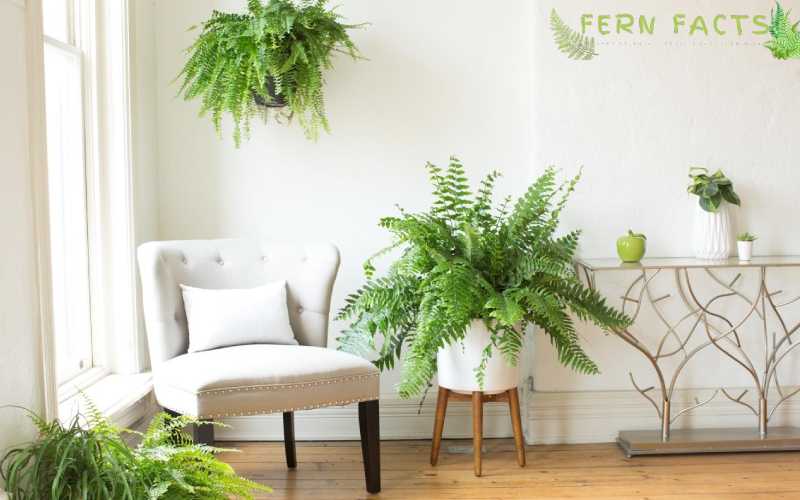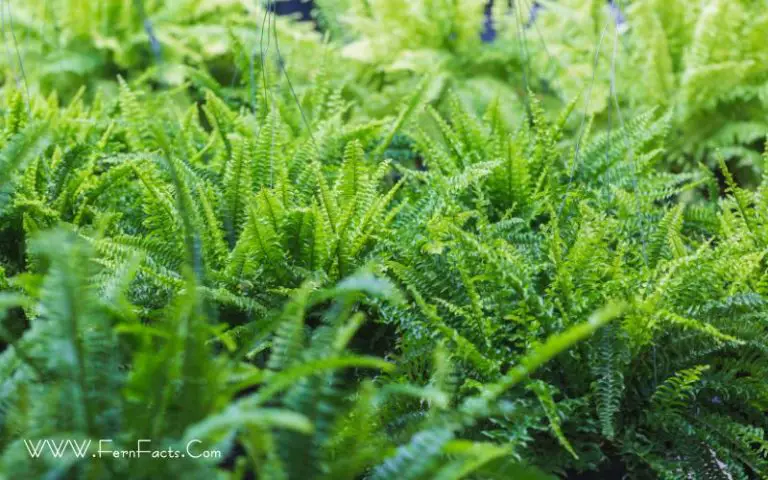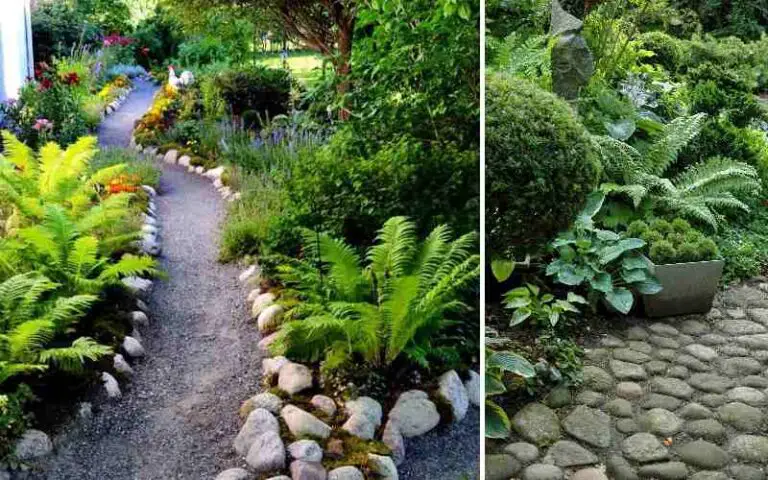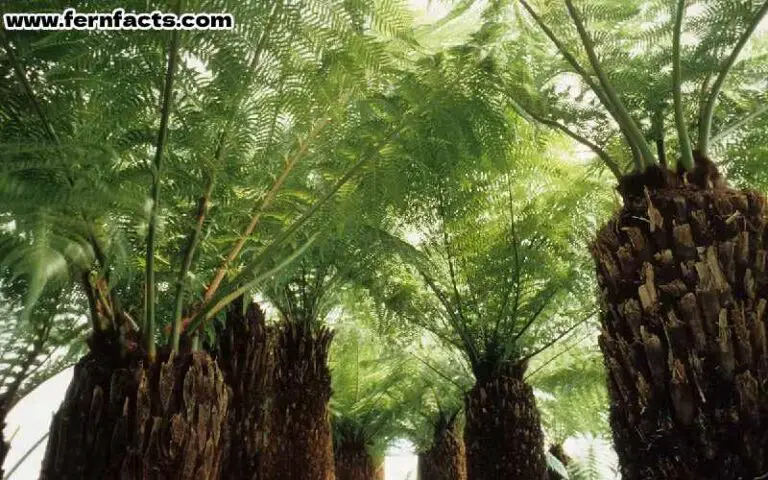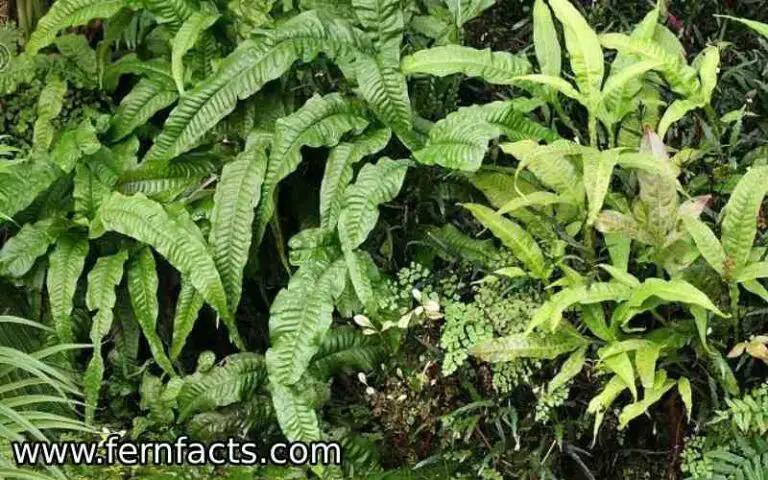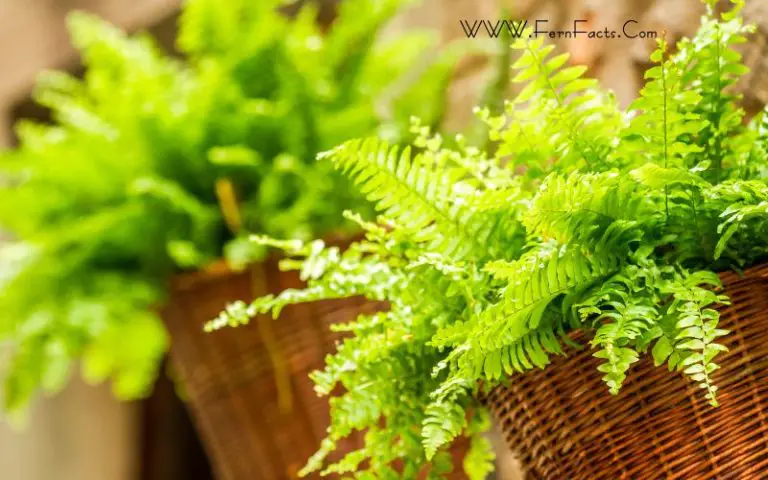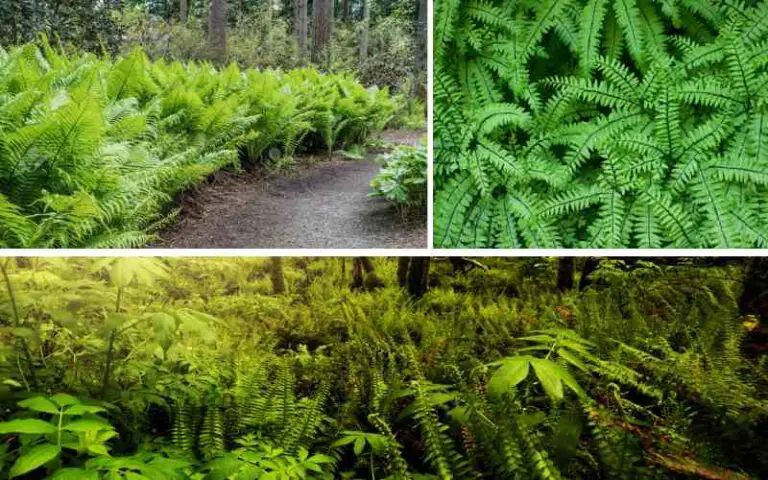Best Evergreen Ferns for House
Evergreen plants keep the beauty of the garden throughout the year. Therefore, evergreen plants would be one of the best houseplants which will lift the house’s wild look.
In this article, we will give you some idea of what evergreen plants mean. Later, we’ll suggest some best evergreen ferns for your house based on certain types such as colorful evergreen, bushy evergreen, and so on. So let’s not wait anymore.
What is an Evergreen Fern?
Evergreen ferns are usually those ferns whose leaves persist throughout the years and remain their greenery foliage. Some Plants die back in winter or lose their leaves or fronds; those can’t be featured as evergreen plants.
Dryopteris ferns are evergreen plants which keep their foliage throughout the year. Some Plants are also Semi-evergreen which means they lose some fronds in winter but not all of them.
They might shed their foliage only for a short period of time and again regrow their fronds during their growing son’s seasons.
Best Evergreen Plants for House
If you are a plant lover then these ferns will be one of the best choices to plant in your house. Because these evergreen and semi-evergreen ferns will retain their greenery foliage throughout the years.
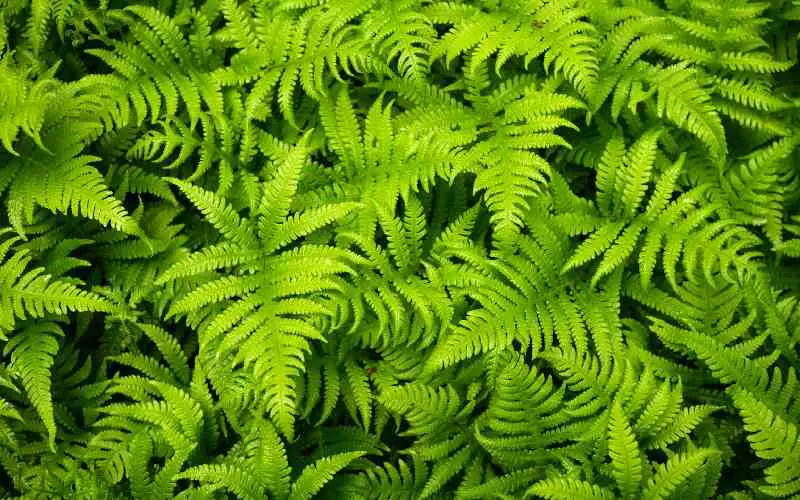
Broad Fronds Evergreen Ferns
Let’s look out for some evergreen ferns that have broader fronds.
Hart’s Tongue Fern
- Botanical name: Asplenium scolopendrium
- Plants: Evergreen
- Native range: Northern hemisphere
- Native habitats: moist soil, damp crevices
- Shade requirements: partial to full shade
- Height: around 0.5 m
- Soil: alkaline or neutral, moist and well drained
Hart’s tongue ferns are evergreen ferns that are widely distributed in the northern hemisphere. These ferns have the most unusual simple, strap-shaped undivided fronds that make them look more stunning.
The fronds of these ferns resemble the tongue of a Hart (male red deer). Additionally, these Hart’s tongue ferns also get the Royal Horticultural Society Award of Garden Merit.
However, these American Native plants have a reputation for difficult cultivation due to ideal environment requirements. These ferns have also been used as medicine plants to cure many diseases.
Bird’s Nest Ferns
- Botanical name: Asplenium nidus
- Plants: evergreen
- Native range: southeastern Asia, eastern Australia, Hawaii, India and eastern Africa
- Shade requirements: partial to full shade
- Height: around 1 m
- Soil: alkaline or neutral, moist and well drained
Bird’s nest ferns are also evergreen ferns which have broad fronds. Their fronds are almost similar to banana leaves.
These plants are very common in southeastern Asia, eastern Australia, Hawaii, India, and eastern Africa. As they are the evergreen plants, they will have fronds throughout all the seasons of the year and this will also not go under the dormancy stage.
These nest fern plants also require partial or fully shaded places with warm and humid places to flourish.
Read More About – Best Ferns for Hanging Baskets
Crocodile Fern
- Botanical name: Microsorum musifolium
- Plant: Evergreen
- Shade requirements: Partial to full shade
- Height: up to 1 m
- Soil: Acid or neutral. Moist, well-drained.
Crocodile ferns are light evergreen ferns that have wide, fairly and thick appearances. Although it doesn’t grow any flowers, its green bushy appearance fills the garden’s heart.
These ferns are one of the easy-growing ferns as they prefer shaded places with moist soil.
Holly Fern
- Botanic name : Cyrtomium falcatum
- Native Region: Eastern Asia
- Plant: Perennial
- Height: around 18 to 24 inches
- Shade: partial shade or full shade
- Soil: well-drained
- Hardiness zone: 6,7,8,9
Japanese Holly ferns are also evergreen ferns that will keep their green appearance all year. These ferns are mostly native to eastern Asia.
Similarly, they prefer tropical moist environments like coastal cliffs, banks of streams, rocky slopes, and other moist stable places. Additionally, they need full or partial shade to grow properly.
They can even survive in low-light conditions. Their ideal temperature would be 50°F. However, they can adapt themselves to room temperature of 68°F as well which also makes them the best houseplants for any gardener.
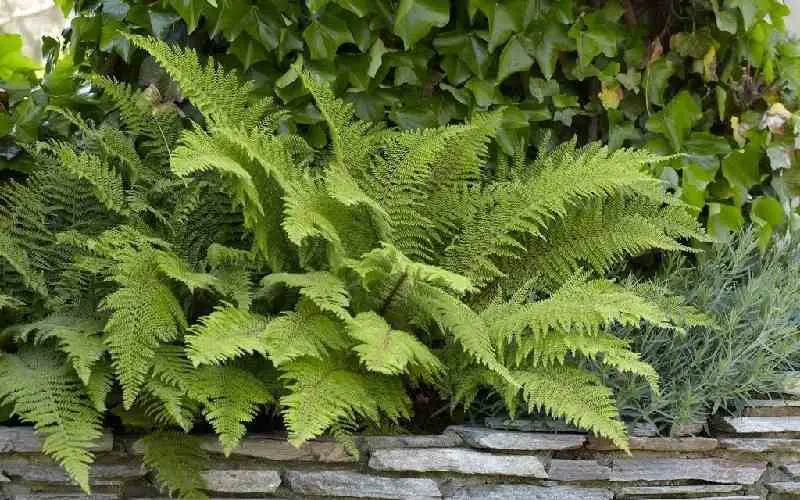
Classic Bushy Evergreen Ferns
This type of fern has a traditional classic bushy appearance in the garden. Their bushy appearances enhance the garden look with a thick shade cover.
Soft Shield Fern
- Botanical name: Polystichum setiferum
- Plant: Evergreen
- Shade: Full or partial shade
- Height: 0.5 – 1 m
- Soil: Acid, neutral or alkaline. Moist, well-drained.
Soft Shield ferns are also another evergreen or Semi-evergreen ferns that are native to Southern and Western European countries. These fern fronds have a soft texture which is why its name is given to soft shield ferns. These are also ornamental ferns which are used for garden purposes. Similar to other plants, they have also received the Royal Horticultural Society’s Award of Garden Merit.
King Fern
- Botanical name: Angiopteris evecta
- Plants: Semi-evergreen
- Shade: partial or full sun
- Height: up to 1.5 m
- Soil: acid, neutral or alkaline. moist, well-drained.
King ferns are evergreen ferns that are more than 300 million years old on this earth. These ferns are regarded as one of the longest fronds along with their bushy appearances among other ferns in the world.
These ferns are Semi-evergreen plants which means they lose their fronds for a shorter period of time and gain their new fronds in the starting seasons of their growing.
These King ferns, fronds, or leaves are also used as a medicine to cure cough.
Makinoi’s Holly Fern
- Botanical name: Polystichum makinoi
- Plants: Evergreen
- Shade: Full or partial shade
- Height: 0.5-1 m
- Soil: acid, neutral or alkaline. Moist, well-drained.
Makinoi’s ferns are elegant olive green ferns which is another best addition to the shade garden. These Makinoi’s Holly ferns create more refined and sophisticated looks that enhance the garden look with their classic bushy appearance.
The contrast between dark green foliage with olive tones makes the plants shine.
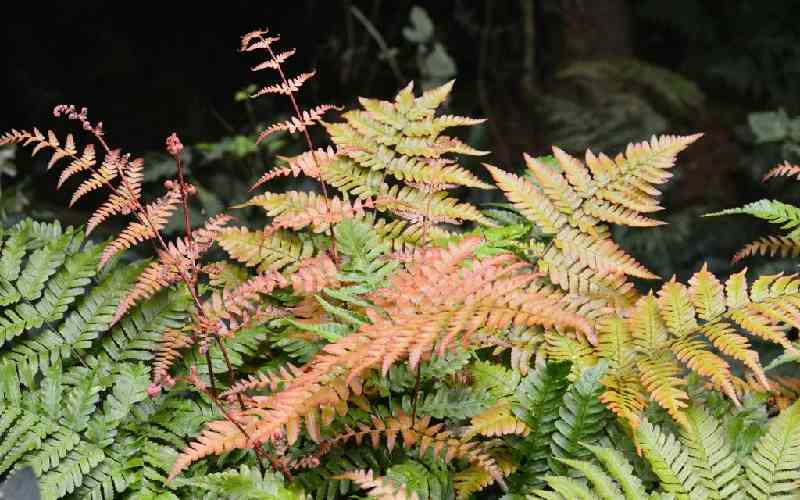
Colorful Evergreen Ferns
Colorful evergreen ferns form a multiple-color journey throughout their growing phase which blooms the garden’s look.
Sunset Fern
- Botanical name: Dryopteris lepidopoda
- Plants: semi-evergreen
- Native range: Himalayas, China, Taiwan, and Myanmar
- Natural habitat: shady forests of coniferous
- Shade requirements: full or partial shade
- Height: around 1 meter
- Soil: acidic or neutral, moist well drained
Sunset ferns are one of the genus of Dryopteris which has a slightly orange-red color when it starts to bloom. As this fern is a semi-evergreen fern, it will lose its fronds in the middle or in the late winter.
It will give your garden a well-coordinated look with other green plants because of its vibrant coloration.
Autumn Fern
- Botanical name: Dryopteris erythrosora
- Plants: Semi-evergreen
- Native range: Asia, Japan, China, and the Philippines
- Shade requirements: full or partial, adaptable under full sun
- Height: around 1 meter
- Soil: tolerance of pH level of the soil with drainage system
Autumn ferns are also known as Japanese shield ferns. During its immature phase, it has coppery red fronds and later it turns green when it becomes fully grown.
While growing these plants, you need to be careful because these ferns cannot tolerate standing water. Too much water can make your plants die.
Their different colored journeys in different phases will create a natural wild atmosphere in your house.
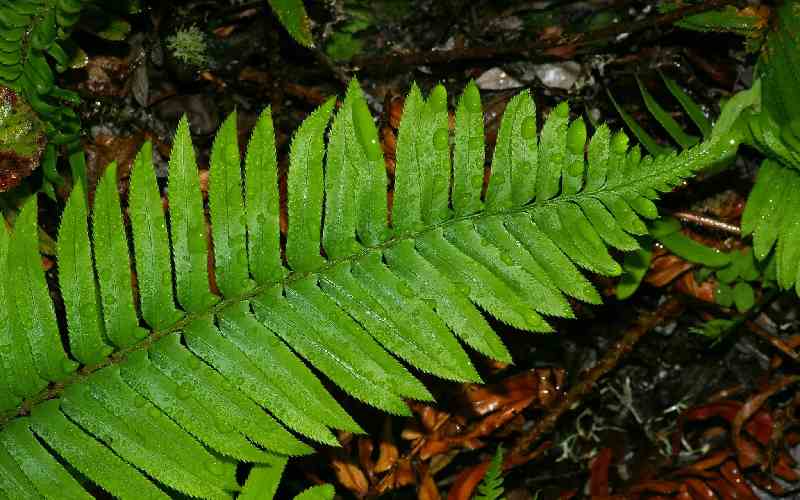
Sword Leaves Evergreen Ferns
Sword leaves ferns have usually formed fronds which just resemble a sword. Christmas ferns, common polypody, and Boston ferns are some examples of sword-looking ferns.
Christmas Fern
- Botanical name: Polystichum acrostichoides
- Plants: Evergreen
- Native range: North America
- Shade requirements: Full or partial shade
- Height: up to 1 m
- Soil: neutral or alkaline and moist, well-drained
Christmas ferns are evergreen plants that are mostly native to North America, including Nova Scotia, Florida, and Texas. These ferns have leather ferns that give glossy, green fronds over the year. Generally, they are fond of shady habitats like woodlands, rocky slopes, and stream banks. Moreover, It’s a very adaptable fern for cultivation in the yard or in the natural park or gardens. As these are evergreen plants, they are also fond of moist, damp environments with filtered sunlight. These ferns are also used as ornamental plants for gardens in order to make the garden look more natural.
Please Read About Another Similar Species: Silver Lace Fern
Common Polypody Ferns
- Botanical name: Polypodium vulgare
- Plants: Evergreen
- Native range:
- Shade requirements: Full or partial shade
- Height: up to 0.5 m
- Soil: neutral or alkaline and moist, well-drained
Common polypody ferns are also evergreen ferns that belong to the Polypodiaceae family.
These ferns are usually fond of shaded and semi-shaded places where moss, old walls, cliffs, and rocks are their best objects to grow actively.
These ferns are another option for alkaline soil to grow successfully because of their characteristics.
Boston Fern
- Botanical name: Nephrolepis exaltata
- Plants: Evergreen
- Shade requirements: partial shade or full shade
- Height: 20 to 98 inches
- Soil: acidic soil (6.0 to 6.5), moist, well-drained, drought tolerant
Boston Fern is also known as sword fern, blue bell Fern, tuber ladder Fern, or fishbone Fern in many countries.
Although their average height is around 40 to 60 centimetres, they can grow up to 1.5 meters in extreme cases. They are fond of moist, shady places for their natural habitats.
Their soil can also tolerate drought; however, you need to mist these plants if the humid conditions drop below 80%.
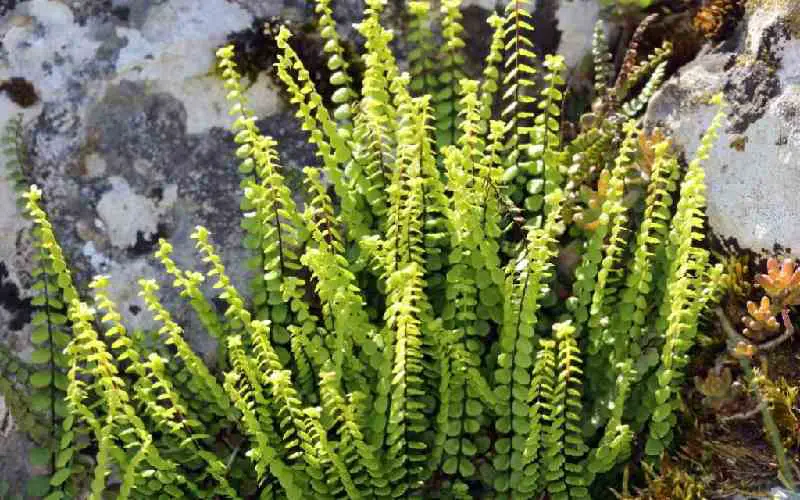
Small-leaf Evergreen Ferns
If you want small fronds shaped like evergreen ferns, then these two will be best for your houseplants.
Maidenhair Spleenwort
- Botanic name: Asplenium trichomanes
- Plants: Evergreen
- Native range: mount regions, temperate and subarctic areas
- Shade requirements: Full or partial shade
- Height: up to 0.3 m
- Soil: neutral or alkaline and moist, well-drained.
Maidenhair spleenwort ferns are small evergreen ferns that are widely spread in mountain regions. Their natural habitats are rocky habitats like cliffs, slopes, walls, and mine waste with several variations remaining worldwide.
Since they prefer neutral alkaline soil that’s why they are one of the best ferns to grow in this soil. They need partial to full shade to thrive. Similarly, they can tolerate -20°C or -4 °F hardiness.
These ferns also gained the Royal Horticultural Society Award of Garden Merit because of their unique adaptation.
Delta Maidenhair Fern
- Botanical name: Adiantum raddianum
- Plants: evergreen
- Shade requirements: partial shade
- Height: up to 0.5 m
- Soil: neutral, alkaline, moist, well-drained
These maidenhair ferns are well-recognized as indoor growing plants because of their small fronds. Their small fronds give delightful looks in the environment.
Their rachis are often black or dark brown which gives a contrasting look to their light green fronds.
Few varieties of these ferns have colored foliage like pink or red colored with different seasonal growth.
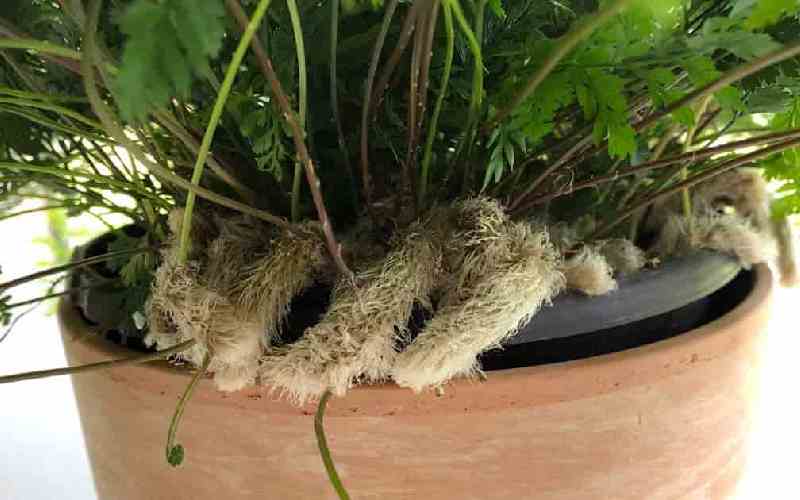
Unusual Evergreen Ferns
These types of evergreen ferns have unusual shapes of fronds which can be interesting ferns as houseplants to decor.
Rabbit’s Foot Fern
- Botanical name: Davallia
- Plants: evergreen
- Native range: Fiji Islands, Oceania
- Native habitats: n/a
- Shade requirements: Partial
- Height: around 1 meter
- Soil: acid, neutral, moist, and well-drained
These rabbit’s foot ferns are also on the list of pretty ferns because of their prettiest foliage.
These ferns have intricate fronds with brown furry rhizome appearance giving a unique admirable look for the nature enthusiast people. You can learn more about these ferns here by using this guide post.
Staghorn Ferns
- Botanic name: Platycerium bifurcatum
- Plant: Perennial evergreen
- Native range: Java, New Guinea, Eastern Australia
- Height: around 35 inches
- Shade: partial
- Soil: acidic, neutral
Staghorn Ferns basically look like deer or elk antlers with heart-shaped arching fronds. These ferns are usually native to Asia and Australia.
Similarly, in Java, New Guinea, South Wales, Queensland, and Lord Howe Island. Their native habitats are rainforest areas with a moist atmosphere.
- Let’s know about another species; Oak Fern that loses its green leaves in winter. And greenery returns after winter
Sum Up
Summing up all the points, evergreen plants are one of the significant plants that keep the house close to nature throughout the years.
Ferns like, bird’s nest ferns, Holly ferns, Hart’s tongue ferns, soft shield ferns, king ferns, Sunset ferns, staghorn ferns, autumn ferns, Christmas ferns are some evergreen ferns that can remain the greenery foliage look of your house and garden even in the winter seasons.
Some will provide a bushy greenery appearance to the garden where some ferns will splash their abundant color during their growing.
Thus, all these evergreen ferns will give you the essence of mother nature all year.

